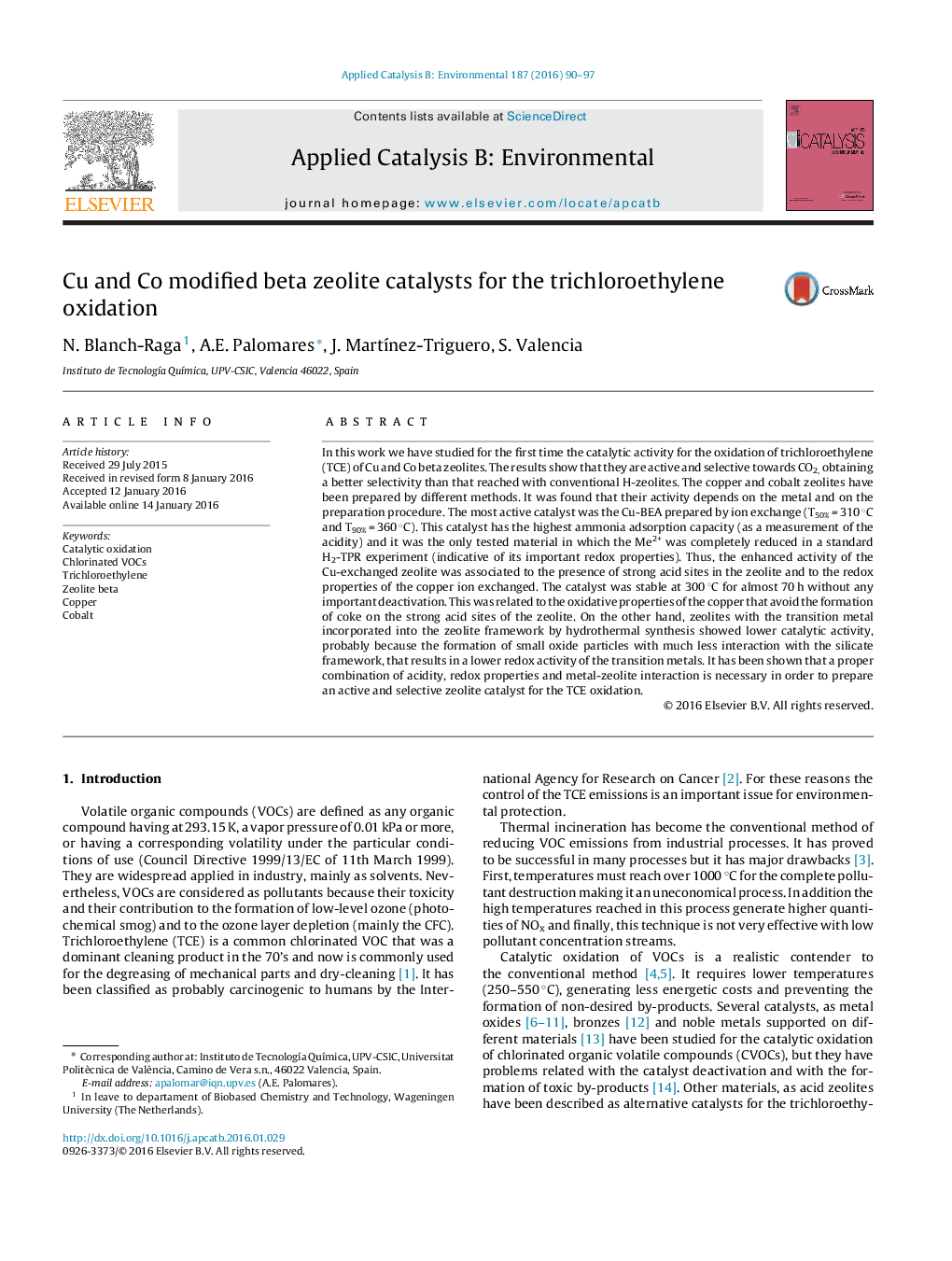| کد مقاله | کد نشریه | سال انتشار | مقاله انگلیسی | نسخه تمام متن |
|---|---|---|---|---|
| 45090 | 46396 | 2016 | 8 صفحه PDF | دانلود رایگان |

• Catalysts based on Cu or Co zeolite beta are active catalysts for the TCE oxidation.
• The way Cu/Co is added to the zeolite plays a significant role on the activity.
• Cu-exchanged zeolite beta was more active than H-zeolites catalyst.
• Strong Brönsted acid sites and metals with redox properties catalyze TCE oxidation.
• An adequate combination of these properties is necessary to have active catalysts.
In this work we have studied for the first time the catalytic activity for the oxidation of trichloroethylene (TCE) of Cu and Co beta zeolites. The results show that they are active and selective towards CO2, obtaining a better selectivity than that reached with conventional H-zeolites. The copper and cobalt zeolites have been prepared by different methods. It was found that their activity depends on the metal and on the preparation procedure. The most active catalyst was the Cu-BEA prepared by ion exchange (T50% = 310 °C and T90% = 360 °C). This catalyst has the highest ammonia adsorption capacity (as a measurement of the acidity) and it was the only tested material in which the Me2+ was completely reduced in a standard H2-TPR experiment (indicative of its important redox properties). Thus, the enhanced activity of the Cu-exchanged zeolite was associated to the presence of strong acid sites in the zeolite and to the redox properties of the copper ion exchanged. The catalyst was stable at 300 °C for almost 70 h without any important deactivation. This was related to the oxidative properties of the copper that avoid the formation of coke on the strong acid sites of the zeolite. On the other hand, zeolites with the transition metal incorporated into the zeolite framework by hydrothermal synthesis showed lower catalytic activity, probably because the formation of small oxide particles with much less interaction with the silicate framework, that results in a lower redox activity of the transition metals. It has been shown that a proper combination of acidity, redox properties and metal-zeolite interaction is necessary in order to prepare an active and selective zeolite catalyst for the TCE oxidation.
Figure optionsDownload as PowerPoint slide
Journal: Applied Catalysis B: Environmental - Volume 187, 15 June 2016, Pages 90–97